#The Quest of Iranon
Text
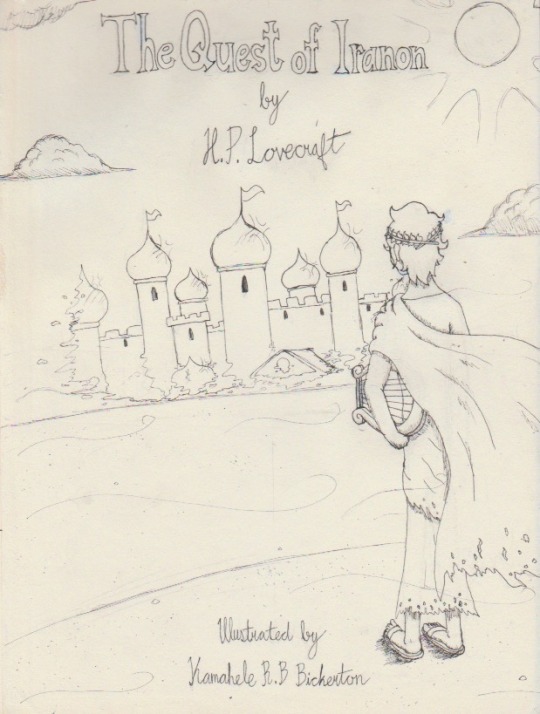
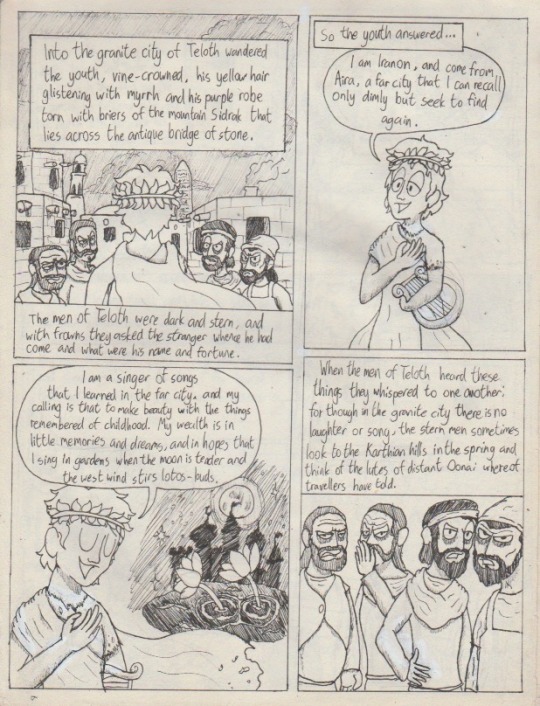



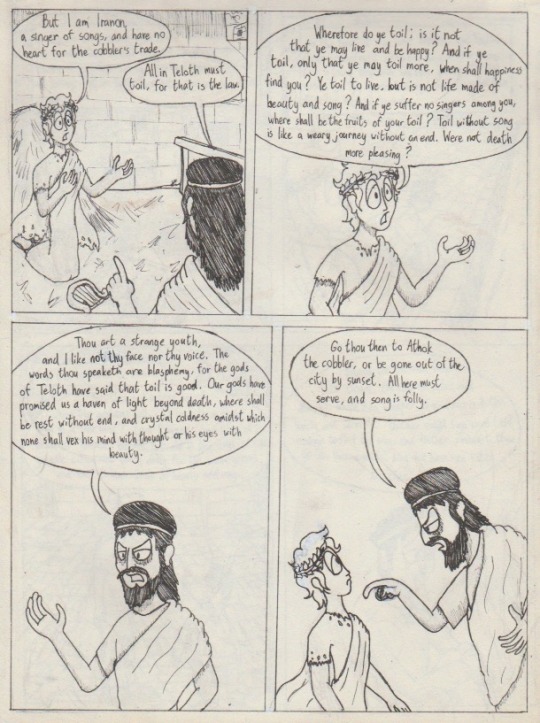


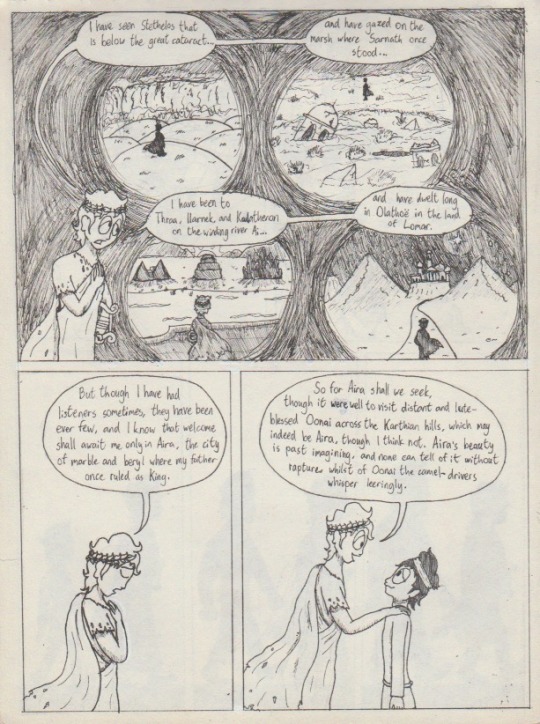

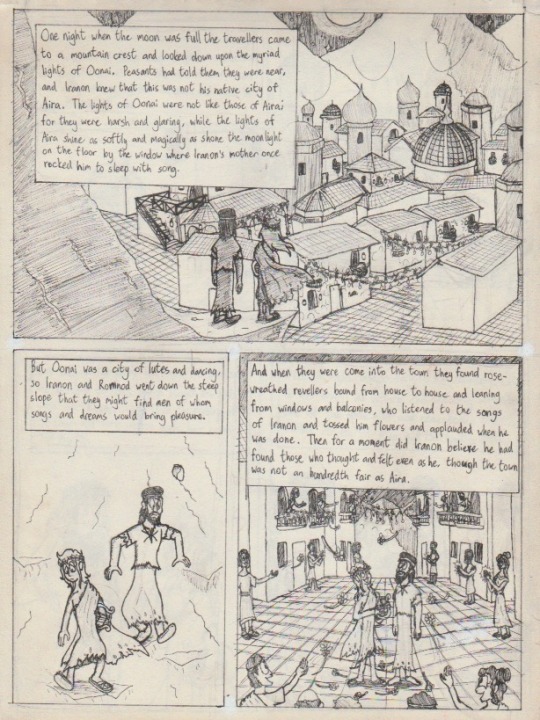
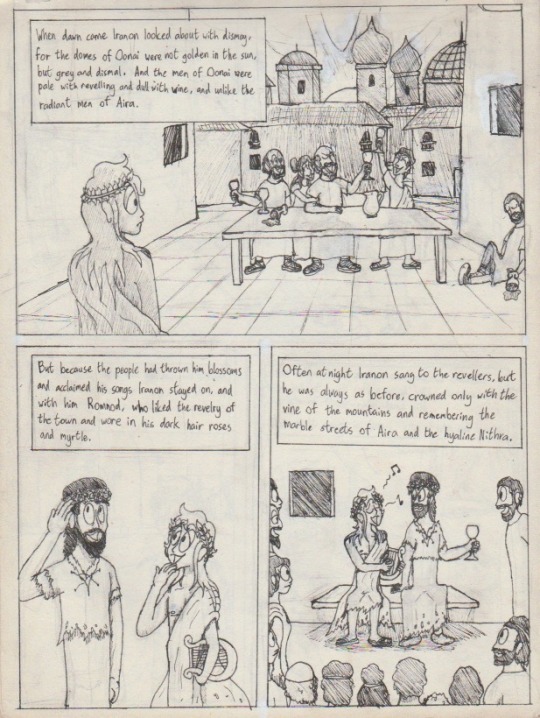

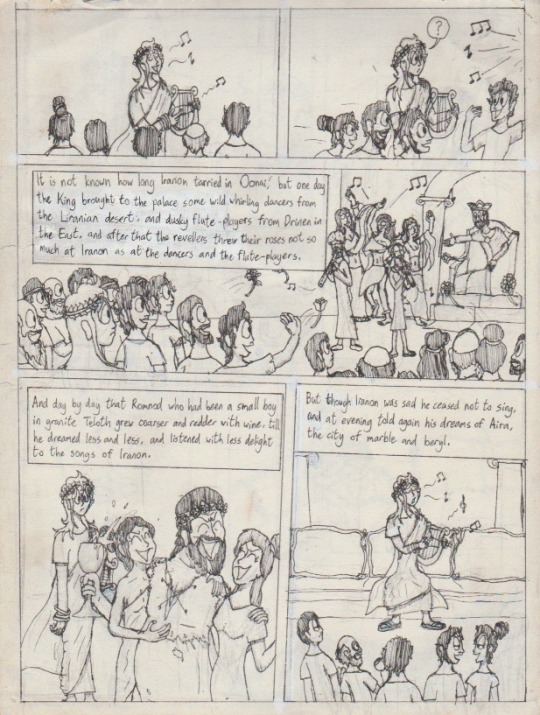


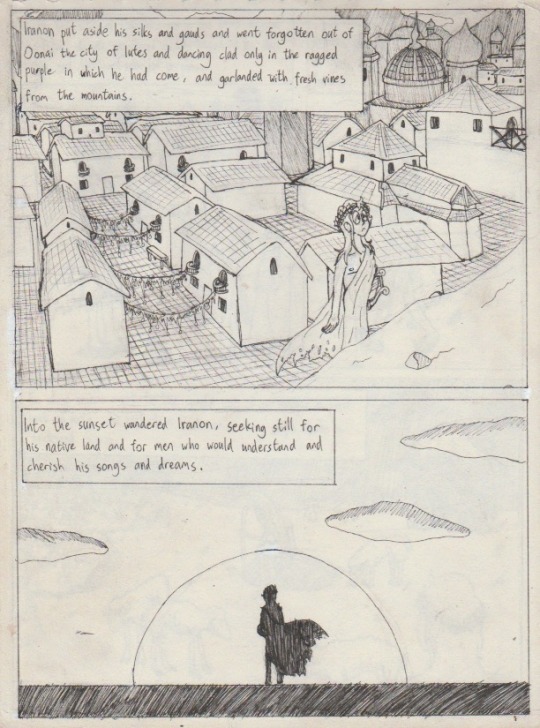
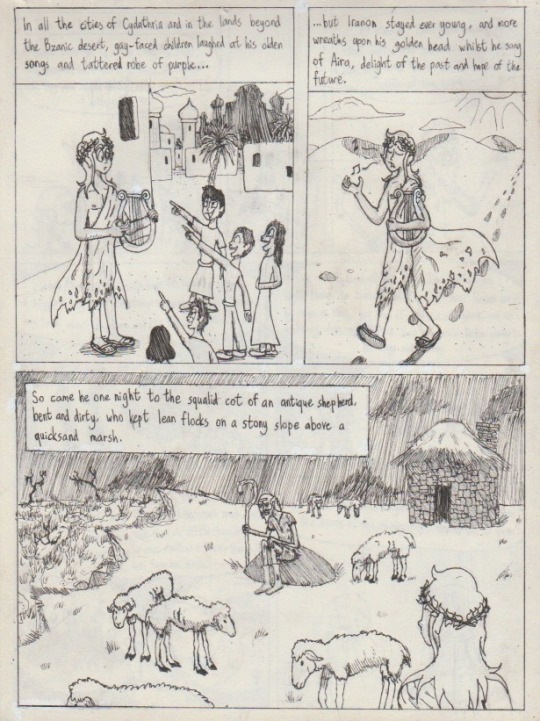
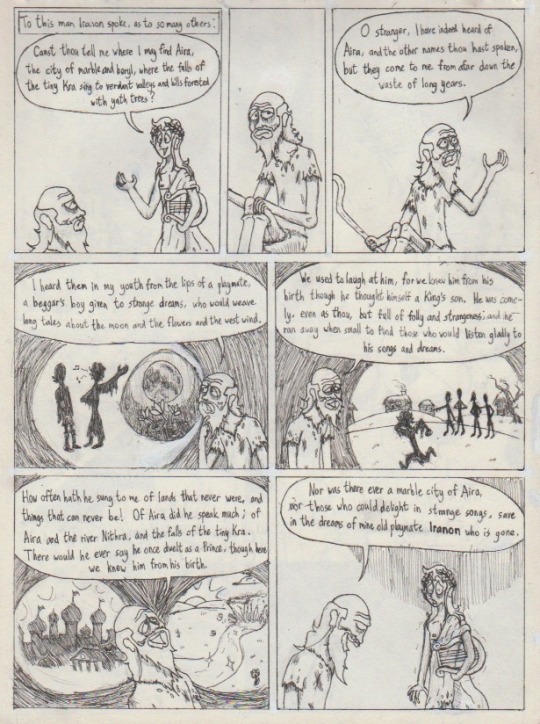

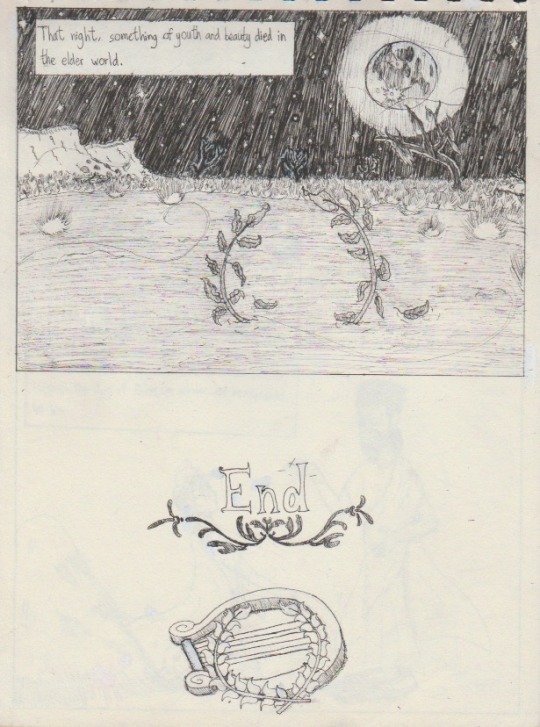
"The Quest of Iranon" by H.P Lovecraft
Comic adaptation by me
#lovecraft#h p lovecraft#hp lovecraft#comic#drawing#dreamlands#iranon#dreamcycle#the quest of iranon
12 notes
·
View notes
Text

Virgil Finlay - H. P. Lovecraft: The Quest of Iranon
(Weird Tales - March 1939)
#virgil finlay#h. p. lovecraft#the quest of iranon#weird tales#pulp art#fantasy art#illustration#lovecraftian horror#horror art
28 notes
·
View notes
Text
My review of The Quest of Iranon
One of the gentlest Lovecraft stories, from his early Gothic/Dunsanian/Decadent period. Though I didn't care much about the Dream Cycle during my first reading of Lovecraft, this story and The Silver Key impressed me a lot. Now after the rereading/first reading in English I'm even more convinced that it's one of this the most personal ones, and the only reason it hasn't been analyzed to death unlike "The Outsider" is that it isn't half as popular. I wonder if the dreary Teloth and artistic-but-debauched Oonai were meant to represent the conservative world of "respectable" Providence families like Lovecraft's and the bohemian world of which many Lovecraft's friends were part; then Iranon's character would reflect Lovecraft's difficulty to fully relate to either of these worlds. Some readers find this story too "self-pitying" and "arrogant" but I think that those feelings, if present at all, are not the main drive of the story. My only complaint would be that, like almost all Dreamlands stories by Lovecraft, it's a bit too sentimental at times, but considering how rare sentimentality is for Lovecraft's writings, it's also a welcome change.
6 notes
·
View notes
Text

Title: The Quest of Iranon (1921)
Author: H.P.Lovecraft
Vote: 6/10
Once again the theme of the dream returns as an alternative to reality and as the ultimate place to which man must aspire, abandoning the sad and gray reality in his research.
1 note
·
View note
Text
Really vibing with stories about people who discover they are actually not royalty. It should not be a happy discovery. Any recs?
#The quest of iranon being the biggest best example ever of course#But I also think about Octavian Nothing sometimes#And that damn ithuvania far side comic takes up a lot of mental real estate
3 notes
·
View notes
Text
I had a friend ask me if I'd ever heard of H. P Lovecraft and remembered all his works are in the public domain, so instead of dealing with over a dozen individual downloads from Project Gutenberg, I decided to see if anyone had made a free omnibus ebook-- and was not disappointed!
The above link is a collection of all of H.P. Lovecraft's original works, from 1917-1935 , all in one ebook file, as EPUB, MOBI, and PDF !
Table of contents under the cut, because it's a very long list; over 63 stories!
this link looks to have been last updated in 2011, and I originally found it on Archive.org from a backup someone made of it :)
The Tomb (1917)
Dagon (1917)
Polaris (1918)
Beyond the Wall of Sleep (1919)
Memory (1919)
Old Bugs (1919)
The Transition of Juan Romero (1919)
The White Ship (1919)
The Doom That Came to Sarnath (1919)
The Statement of Randolph Carter (1919)
The Terrible Old Man (1920)
The Tree (1920)
The Cats of Ulthar (1920)
The Temple (1920)
Facts Concerning the Late Arthur Jermyn and His Family (1920)
The Street (1920)
Celephaïs (1920)
From Beyond (1920)
Nyarlathotep (1920)
The Picture in the House (1920)
Ex Oblivione (1921)
The Nameless City (1921)
The Quest of Iranon (1921)
The Moon-Bog (1921)
The Outsider (1921)
The Other Gods (1921)
The Music of Erich Zann (1921)
Herbert West — Reanimator (1922)
Hypnos (1922)
What the Moon Brings (1922)
Azathoth (1922)
The Hound (1922)
The Lurking Fear (1922)
The Rats in the Walls (1923)
The Unnamable (1923)
The Festival (1923)
The Shunned House (1924)
The Horror at Red Hook (1925)
He (1925)
In the Vault (1925)
The Descendant (1926)
Cool Air (1926)
The Call of Cthulhu (1926)
Pickman's Model (1926)
The Silver Key (1926)
The Strange High House in the Mist (1926)
The Dream-Quest of Unknown Kadath (1927)
The Case of Charles Dexter Ward (1927)
The Colour Out of Space (1927)
The Very Old Folk (1927)
The Thing in the Moonlight (1927)
The History of the Necronomicon (1927)
Ibid (1928)
The Dunwich Horror (1928)
The Whisperer in Darkness (1930)
At the Mountains of Madness (1931)
The Shadow Over Innsmouth (1931)
The Dreams in the Witch House (1932)
The Thing on the Doorstep (1933)
The Evil Clergyman (1933)
The Book (1933)
The Shadow out of Time (1934)
The Haunter of the Dark (1935)
6 notes
·
View notes
Note
The Cats of Ulthar
The Loved Dead
The Horror in the Museum
The Book
The Horror at Martin's Beach
The Quest of Iranon
The Terrible Old Man
The Alchemist
Pickman's Model
Imprisoned with the Pharaohs
The Festival
The Music of Erich Zann
The Electric Executioner
The Hoard of The Wizarrd-Beast
I think the one I read before was the Horror at Martin's Beach, the name sounds familiar.
3 notes
·
View notes
Note
“Unlike TERFs, (Aristasians) want everything to be beautiful. Or else.” A thought for you: anyone remember Lovecraft’s “The Quest of Iranon”? What if Iranon actually established an Aira? A utopia of Ideal Beauty—of artworks and ideas and people—would need enforcing, and thus get really dystopian really fast. (Which brings to mind a nagging question about Jacqueline Carey’s Terre D’Ange: in a land where human beauty is judged as ruthlessly as that of show dogs, what’s life like for a Quasimodo?)
--
11 notes
·
View notes
Text
LOVECRAFT'S DREAMLAND. (part 1) (From an essay written by Richard G. Huber in 1984) Culturally and geographically HPL's Dreamland is an amalgam of various ancient civilizations dear to Lovecraft since his childhood (HPL was extraordinarily well read even as a child) There is the Grecian touch in the costume of Iranon (from, THE QUEST OF IRANON) and in the style of multi-oared galleys that traverse the seas, the Arabian Nights influence in the turbaned merchants, camel caravans, and bulbous architecture. The skulking mysticism of pre-Buddhist Tibet is captured in Lovecraft's conception of 'Leng' and a Medieval European flavor appears in the mention of lutes and viols. An ancient Egyptian aura is reflected in aspects of his tales of the 'Cats of Ulthar.' The inhabitants of Dreamland are deeply religious. Temples abound and most residents worship the ' Great Ones' who in turn are lorded over by the ' Other Gods'. Though there are many priests there are a surprising lack of wizards or magicians in Dreamland. All magical doings seem to be reserved for the gods themselves. There are no machines in Dreamland. Transportation is carried out on foot, on the backs of zebras, by camel, or elephant in the Southern regions, by Yak in the North. (Shantak Bird) a sort of eagle with a horses head, is reserved only for the bravest travellers. Sea voyages are usually made aboard galleys fitted with sails and banks of oars. Dreamland in general is a naive and backward place, a region of childhood wonder and fantasy. Lovecraft wrote of his "Dunsanian" tale, THE SILVER KEY : "It was not only non-intellectual, but anti-intellectual . . . " (Selected Letters IV pp 177) Lovecraft's description here could be applied to all his 'dreamland tales'. Though 'Unknown Kadath' seems to exist somewhere to the North in 'Earth's Dreamland', it exists near the South Pole on our material earth. Of course that is the assumption of the 2 explorers who see the ruined city of the 'star-headed' plant/creatures in, AT THE MOUNTAINS OF MADNESS. Some of Lovecraft's critics have been disturbed by this inconsistency, but there is no particular evidence to suppose that Dreamland in geographically similar to the physical earth (in fact there is some reason To interpret that it may be FLAT!) There are places where the two spheres meet and even share a oneness, but even these follow no earthly logic. A clue to Lovecraft's intentions where Dreamland is concerned might be found in the introductory paragraph of BEYOND THE WALL OF SLEEP, a story which in its style at least has little to do with Lovecraft's Dunsanyian style: " We may guess that in dream life, matter, and vitality, as the earth knows such things, are not unnecessarily constant, and that time and space do not exist as our waking selves comprehend them." If Randolph Carter can explore Earth's Dreamland and yet sleep in his bed at home at the same time, it seems hardly surprising that Kadath can likewise exist in two realms and two (or more) different locations jointly. Another thing that might be considered is that all things in Dreamland are THE PRODUCT OF DREAM. Though it is consistent in its apparent tangiblity to more more than one person - Kuranes, Carter, and others - it is, as we see in, THROUGH THE GATES OF THE SILVER KEY, a projection of the dreams of higher, supernatural beings. Below is a map of Lovecraft's Dreamland created by Richard G. Huber in 1984. (Exhibit 173)

5 notes
·
View notes
Text







An adaptation of H.P Lovecraft's "The Quest of Iranon" I'm working on.
1 note
·
View note
Text
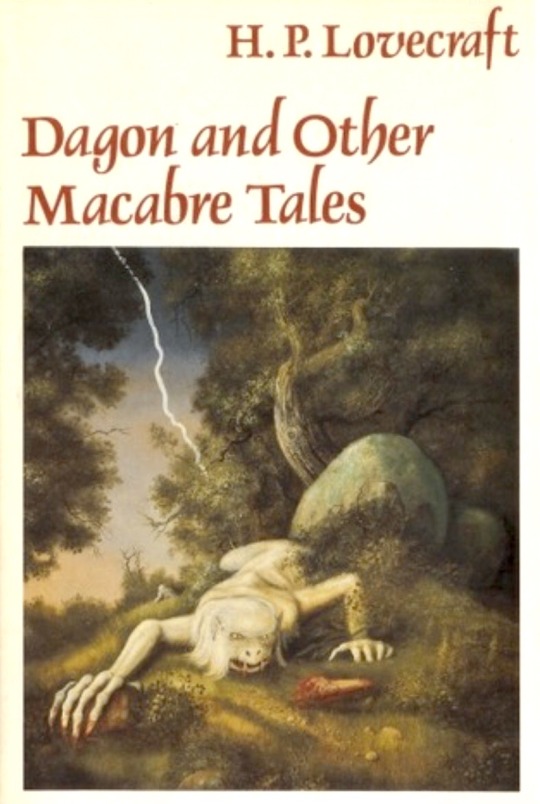
DAGON AND OTHER MACABRE TALES by H.P. Lovecraft. (Sauk City: Arkham House, 1986). Selected by August Derleth, text editing by S.T. Joshi, introduction by T.E.D. Klein. Cover illustration by Raymond Bayless.
All the remaining fiction by H.P. Lovecraft is collected in this final volume of the definitive Lovecraft, which includes every type of imaginative story in which the author excelled—Dunsanian fantasies, Gothic horror, and tales of the Cthulhu Mythos. Though secondary to the remarkable fiction preserved in THE DUNWICH HORROR and AT THE MOUNTAINS OF MADNESS, these early works constitute absorbing testimony to Lovecraft’s creative development. Completing this volume is the only critical recension of “Supernatural Horror in Literature,” the single most significant essay on the horror genre.’
A Note on the Texts, by S.T. Joshi
A Dreamer’s Tales, by T.E.D. Klein
The Tomb
Dagon
Polaris
Beyond the Wall of Sleep
The White Ship
The Doom That Came to Sarnath
The Tree
The Cats of Ulthar
The Temple
Facts Concerning the Late Arthur Jermyn and His Family
Celephaïs
From Beyond
The Nameless City
The Quest of Iranon
The Moon-Bog
The Other Gods
Herbert West—Reanimator
Hypnos
The Hound
The Lurking Fear
The Unnamable
The Festival
Under the Pyramids
The Horror at Red Hook
He
The Strange High House in the Mist
The Evil Clergyman
In the Walls of Eryx
The Beast in the Cave
The Alchemist
The Transition of Juan Romero
The Street
Poetry and the Gods
Azathoth
The Descendant
The Book
Supernatural Horror in Literature
Index to Supernatural Horror in Literature
Chronology of the Fiction of H.P. Lovecraft
Bibliographic Information
#books#book cover#arkham horror#h.p. lovecraft#the tomb#dagon#polaris#sarnath#the temple#from beyond#herbert west#reanimator#the festival#under the pyramids#the alchemist#azathoth#supernatural horror#elder gods#old ones#cthulhu mythos#horror#fantasy#gothic horror#book blog#books books books
13 notes
·
View notes
Video
youtube
"A Procura de Iranon" (1921) - H.P.Lovecraft / "The Quest of Iranon"
#youtube#Uma obra prima da fantasia pela pena do mestre Lovecraft. Uma maravilhosa volta ao passado oculto da Humanidade ou qualquer outra interpreta
0 notes
Text
My review of The Tree
If The Temple would probably be easier to understand if it was more homoerotic, this story has the opposite problem: it's so homoerotic that it's actually clouds the meaning! The bond between two artists comes off as so intense and the murder is hinted on so subtly that a lot of readers just completely miss that Musides is meant to have killed Kalos. On the other hand, this fault, if it even can be called a fault, is very small in comparison to how much the same bond enriches the story that otherwise would have been very simplistic. The pair of friends, one of which is into wild partying and the other is a homebody devoted only to his art, have also appeared in The Quest of Iranon, but in The Tree the focus on such relationship is even stronger. One probably wouldn't immediately associate Lovecraft with such passages as "no shadow of artistic jealousy cooled the warmth of their brotherly friendship", "the sculptors’ attachment was known to be deep and sacred" and "his eyes filled with visible tears at the thought that Kalos should care more for the fauns and the dryads than for him", yet here we are. All that even makes me wonder if it was indeed artistic jealousy that pushed Musides to murder, rather than just jealousy towards the spirits of the grove, or the inability of Kalos to reciprocate his feelings. Or maybe, like Leila Hunn initially suggested in their analysis of the story, there was no murder at all, and Kalos just wanted to be together with his friend in death? As I said, Lovecraft ended up writing a more complex story than he probably intended - his description of the idea in a letter to Alfred Galpin sounds like a very straightforward story about envy and revenge.
0 notes
Photo

Midnattsgästerna
H.P. Lovecraft
Tolv noveller med H.P. Lovecrafts mycket speciella tonfall, från traditionell skräck till vad Lovecraft kallade ”kosmisk fasa”, skräckfantast och svindlande visioner från världar bortom allt förnuft.
Detta är den tredje volymen i en stor bokserie med H.P. Lovecrafts samtliga noveller och romaner, en unik samling berättelser av den främste av alla skräckmästare efter Edgar Allan Poe.
I denna volym:
Midnattsgästerna (Herbert West - Reanimation) 1922
De andra gudarna (The Other Gods) 1921
Det onämnbara (The Unnamable) 1923
Iranons dröm (The Quest of Iranon) 1921
I gravvalvet (In the Vault) 1925
Randolph Carters berättelse (The Statement of Randolph Carter) 1919
Vad månen ser (What the Moon Brings) 1923
Återkomsten (The Outsider) 1921
Träsket (The Moon-Bog) 1921
Prästmannen (The Evil Clergyman) 1937
Templet (The Temple) 1920
Fyra fragment
- - - - - -
1992. 160 sidor. Häftad
Översättning och urval: Sam J. Lundwall
ISBN: 91-7992-031-4
JVM-serien skräck
1 note
·
View note
Text


VOORMITHADRETH - The Quest of Iranon
#VOORMITHADRETH#The Quest of Iranon#cassette#tape#Ancient Meadow Records#dungeon synth#minimal#drone#dark ambient
4 notes
·
View notes
Text
Some interesting comments from Crypt of Cthulhu 26
All are the answers to the letter of some Joel D. Lane from the previous issue. This Lane seems to be, ahem, a fun guy with wonderful ideas (no).
About Nyarlathotep:
[Peter Cannon]: "Regarding Joel D. Lane's remarks concerning HPL and homosexual undertones in his fiction. For at least one instance that he cites, the handsome young man with "the fascination of a dark god or fallen archangel" (from the Dream-Quest), one can point to a literary source. As I've shown in my article comparing the two works, HPL was greatly influenced in writing the Dream-Quest by William Beckford's Vathek. An uninhibited homosexual, Beckford consciously stocked his novel with attractive young men. I suspect the naive Lovecraft derived the image of the boyish Nyarlathotep from Beckford, without realizing the homoerotic implications."
And about The Quest of Iranon:
[S. T. Joshi]: "One other strange remark made by Mr. Lane: he calls "The Quest of Iranon" a "limp-wristed" story--a puzzling statement, since to my mind the philosophical position expressed in the tale (that art and music are of greater worth to the human spirit than the plodding grind of manual labor) seems to me a perfectly sensible and rational one; and if Mr. Lane would read the story more carefully, he would find some very nasty satire on the Protestant Work Ethic in the tale. The prose is some of the most musical in all Lovecraft, I think."
[Darrell Schweitzer]: "I might add that Mr. Lane may be reading too much into "The Quest of Iranon. " We need not question the author's emotional maturity. The story is simply imitation-Dunsany, and a specimen of the sort of romanticism between beautiful and merely pretty, with a "farewell cruel world" theme which doesn't quite convince. It is comparable to several Dunsany stories, such as "Carcassone" and "The Sorrow of the Search," although it adds an element of (seeming) self-pity not found in Dunsany."
All this sounds very plausible. I read Vathek at 14, in the book of old Gothic stories where it was the only one not dull enough for me to finish it, and I still remember how impressed I was by the description of Eblis, which even among the general homoeroticism stood out almost as much as the description of Nyarlathotep in the Dream-quest. As for Iranon, I'm definitely not in the camp that slams this story for being too immature and self-pitying, and I do think that it (perhaps unconsciously) criticizes the values of that sort of society that Lovecraft grew in.
#lovecraft#h.p. lovecraft#crypt of cthulhu#letters of comment#the dream-quest of unknown kadath#the quest of iranon#nyarlathotep#vathek#s.t. joshi#peter cannon#darrel schweitzer#fanzines#lovecraft fandom
5 notes
·
View notes